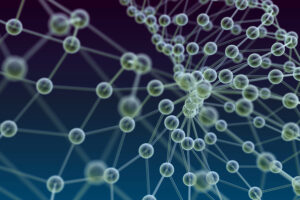
New method to make complex polymers with precisely controlled structures
Canadian Plastics
Materials Research & DevelopmentDeveloped by researchers at Hokkaido University, the process could open new avenues for producing a wide range of advanced materials.

Image Credit: Adobe Stock/Photobank
In a development that could open new avenues for producing a wide range of advanced materials, a team of researchers at Hokkaido University in Sapporo, Japan have created a new process for making long and geometrically interlinked polymer molecules from several different alternating molecular units joined in a controlled sequence.
The process could be used for applications in many fields, the researchers said, including drug delivery, data storage, microelectronics, and nanolithography.
Synthetic polymers are some of the most common materials of the modern world, formed when individual monomer molecules react together to create polymer chains. Polyesters in clothing, polypropylene in packaging, and polyamides in ropes and machinery components are just a few common examples.
However, much more versatility is possible by gaining precise control over the sequence in which different monomer molecules combine to form blocks, which then themselves link together further – gaining fine control over the formation of these materials, known as block polymers, generally requires complicated cycles of chemical reactions.
The achievement is an example of a so-called “one-pot-and-one-step” reaction, meaning that it involves adding the required monomers to a single reaction vessel and using chemistry to control the assembly of the monomers into blocks and then into a block polymer. “We’ve managed to control the formation of block polymers in a one-pot-and-one-step process,” said Professor Toshifumi Satoh of Hokkaido University’s Division of Applied Chemistry.
The monomers in this study are called cyclic anhydrides, epoxides, and oxetanes. A crucial key to controlling how they react, the researchers said, is the use of an alkali metal carboxylate — which acts as a catalyst — to switch the polymer-building processes between different forms of reaction.
“We can control the topology and the two- and three-dimensional structure of our polymers, in addition to the basic sequence in which the monomers combine,” Satoh added.
In one experiment, the team demonstrated the potential of their technique by controlling the combination of four different monomers to make diblock tetrapolymers. The temperatures at which these materials changed from a solid into more viscous and rubbery states, known as their glass transition temperatures, could be altered by varying the specific chemical structures of the linked blocks.
The procedure can also create a variety of symmetrical polymer molecules, such as globular structures extending outwards from a simple core, similar to the branches on a tree.
“We’re excited to have developed such a controllable polymer production process that could be readily adopted for industrial scale production, as well as being useful for laboratory-level explorations of polymer chemistry,” Satoh said.
